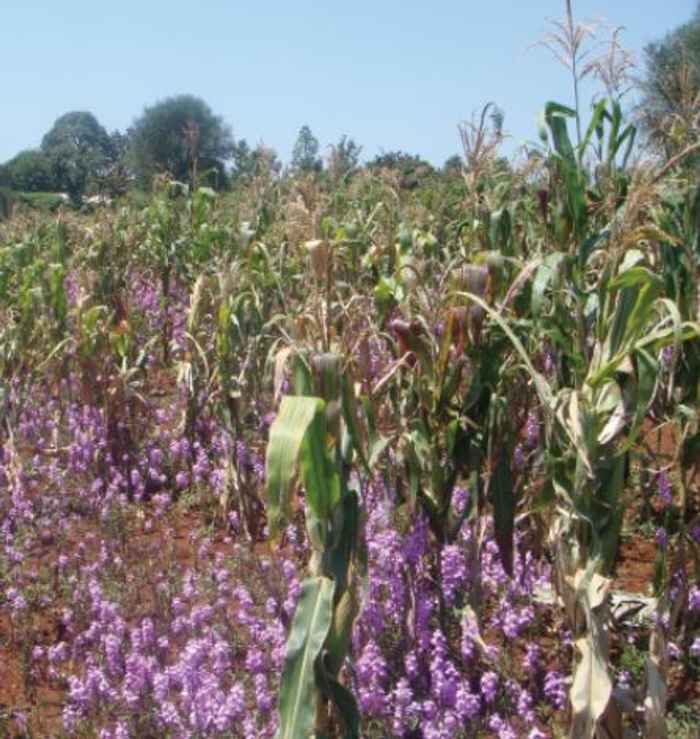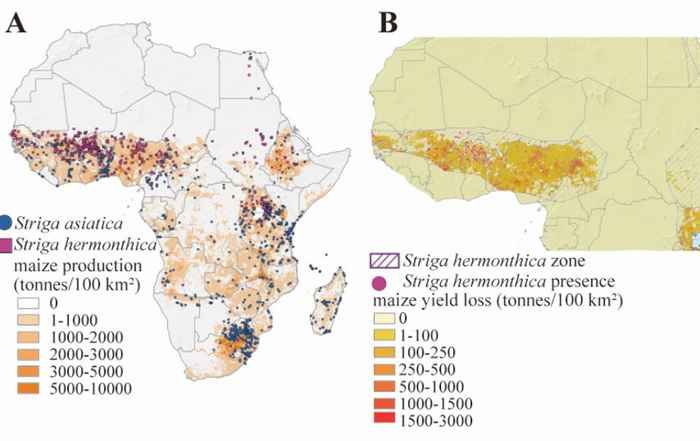More maize, less witchweed: new crop could save African harvests
6 January 2023

Food security is a growing challenge, especially in light of climate change and increasing food needs around the world. Another grave challenge to food security is a small plant with beautiful purple flowers: Striga or witchweed. Although beautiful, this plant is called witchweed for a reason. Striga seeds lie dormant in the soil until their germination is triggered by strigolactones, specific plant hormones secreted into the soil by the roots of plants, including maize. After germination, Striga penetrates the root of the maize and drains nutrients and water, like a vampire, sometimes causing entire harvests to fail.
Discovery of resistance in maize
The research team found a new possible basis for resistance to Striga. Intriguingly, a North American corn line seems to provide the solution to the plague in Africa. In the lab, PhD student Changsheng Li analyzed the strigolactones of a whole set of different maize lines. The one North American line was found to secrete a different mixture of strigolactones into the soil than most of the other lines and was therefore less susceptible to Striga. 'Research into the mechanism behind this subsequently showed that one of the genes responsible for the biosynthesis of strigolactones in this maize line is less active,' explains Bouwmeester. ‘We now want to use that mechanism to introduce this Striga resistance into the maize that grows in Africa.’
Making African maize Striga-resistant
Over the next two years, Bouwmeester will use an ERC Proof of Concept grant to collaborate with researchers from the International Maize and Wheat Improvement Center (CIMMYT). In the lab and greenhouse at the Amsterdam Science Park and in Mexico, where CIMMYT is based, the researchers will use modern biotechnology to change the strigolactone composition in African maize lines. They will then test these lines together with farmers in Kenya to assess their sensitivity to Striga.
Publication details
C. Li, L. Dong, J. Durairaj, J.-C. Guan, M. Yoshimura, P. Quinodoz, R. Horber, K. Gaus, J. Li, Y. Setotaw, J. Qi, H. De Groote, Y. Wang, B. Thiombiano, K. Floková, A. Walmsley, T. Charnikhova, A. Chojnacka, S. Correia de Lemos, Y. Ding, D. Skibbe, K. Hermann, C. Screpanti, A. De Mesmaeker, E. Schmelz, A. Menkir, M. Medema, A. Van Dijk, J.Wu, K. Koch, H. Bouwmeester: ‘Maize resistance to witchweed through changes in strigolactone biosynthesis’, in Science (6 January 2023). DOI: 10.1126/science.abq4775
